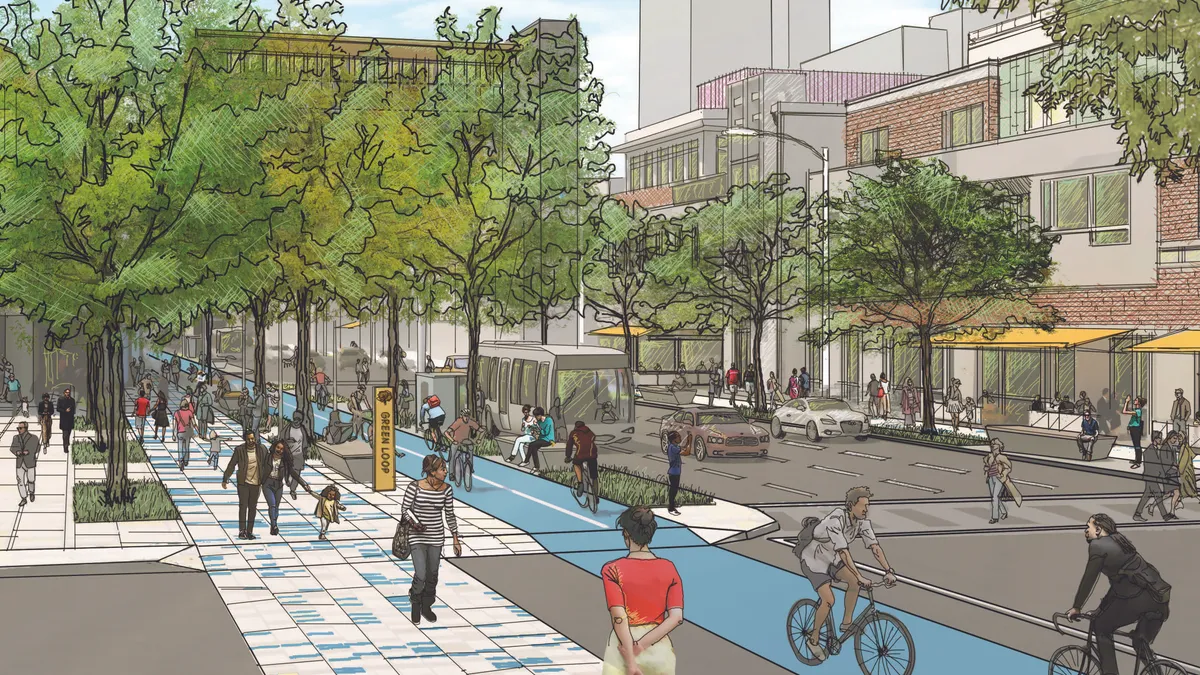Dive Brief:
- The International Downtown Association (IDA) released a study, The Value of U.S. Downtowns and Center Cities, which examines the value of downtown areas for citizens.
- The study analyzed more than 100 data points within five key principles: economy, inclusion, vibrancy, identity and resilience. It sampled data from 13 pilot cities: Baltimore; Charlotte; Grand Rapids, MI; Lancaster, CA; Miami; Norfolk, VA; Pittsburgh; Sacramento; San Antonio; San Francisco; Santa Monica, CA; Seattle and Wichita, KS.
- The study found that downtowns create more opportunities for residents in the five key principles and greater returns on investment (ROI) than other areas, and are therefore worthy of greater investments from the cities themselves and the surrounding regions.
Dive Insight:
IDA's data analysis found that every dollar invested in a downtown district has the potential to produce a greater ROI than less economically-productive areas. Plus, the importance of investing in local solutions is increasing because of shrinking federal funding. The study concludes that "[i]nvesting in a strong downtown remains crucial for a successful city and region."
The study also highlighted this overall thought: "While small in physical size, downtowns are immensely valuable, diverse, efficient, inclusive, and resilient on multiple levels." The average downtown in the pilot accounted for 3% of the city's total area, but it generates significant tax revenue: 13% of income tax revenue, 14% of sales tax revenue, 45% of hotel tax revenue and 64% of parking tax revenue. The average pilot downtown also accounted for 40% of the city's total office space and nearly one-third of the city's total jobs.
In addition to monetary benefits, downtown areas generally provide more inclusivity for residents than surrounding areas by welcoming people from all walks of life. Easy access to amenities tends to make downtowns more equitable than their surrounding metro regions. About 35% of the pilot cities' non-white residents live in downtown areas. That being said, the study cautioned that increasing costs of living can drive out long-time downtown residents and diversity if not kept in check.
The combination of multiple social and economic benefits makes downtowns more resilient than other areas, the study indicates. Better mobility options, green space and parks also make them environmentally resilient.
The study mentions a resurgence in downtowns over the past decade. Cities increasingly are recognizing the value that downtown investments hold for residents and future prosperity. That's evident in places like Detroit, which is creating a downtown sports and entertainment district, and in Houston, which last year unveiled a 20-year plan to revitalize its downtown.












